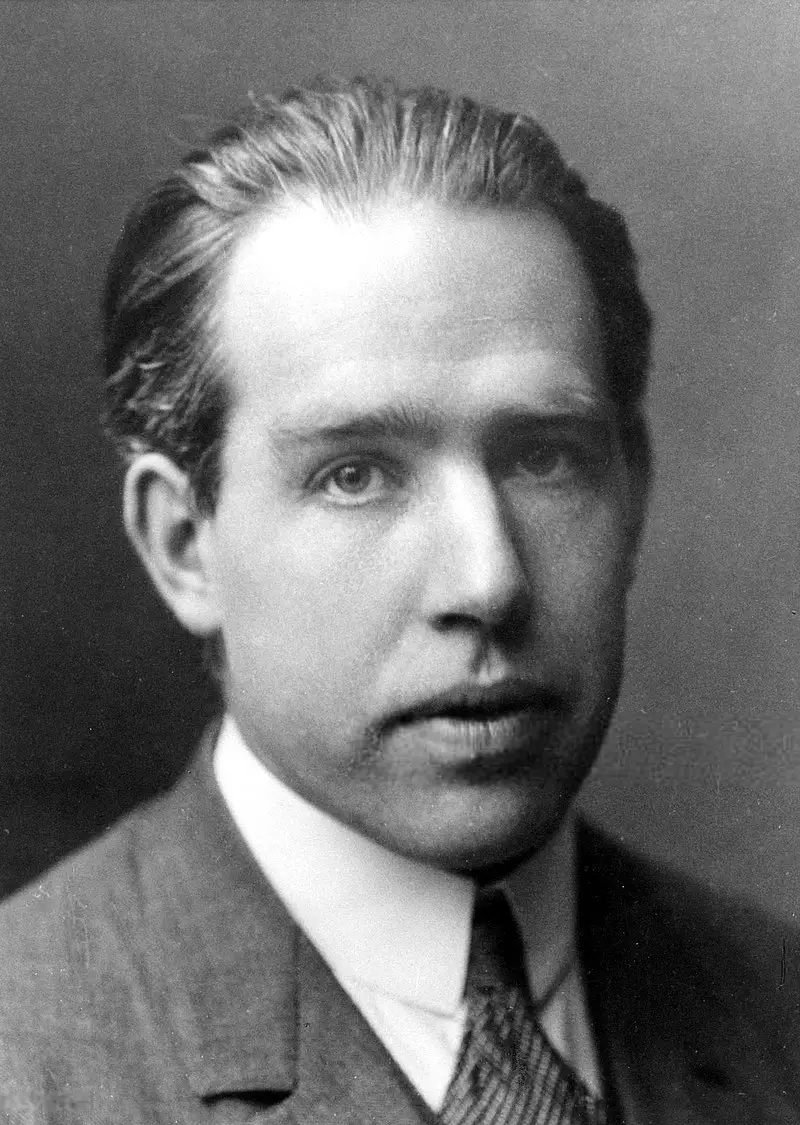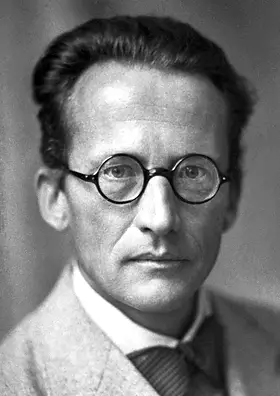
An atomic model is a representation of the internal structure of an atom.
Throughout history, the constitution of matter has had several models that have evolved until reaching the current atomic model.
Below is a timeline of the most important atomic models:
1. Model of Democritus of Abdera (450 BC)
The Democritean atomic model was developed by the Greek philosopher Democritus of Abdera . Democritus believed that matter was made up of tiny indestructible or indivisible particles which he called atoms.
 Democritus, an ancient Greek philosopher, was one of the first to propose the idea that matter was composed of indivisible, discontinuous particles called "atoms." In his philosophy, atoms were the fundamental units of reality and were eternal and infinitely small.
Democritus, an ancient Greek philosopher, was one of the first to propose the idea that matter was composed of indivisible, discontinuous particles called "atoms." In his philosophy, atoms were the fundamental units of reality and were eternal and infinitely small.
Democritus believed that different types of matter were formed from combinations and arrangements of atoms in empty space.
Importance of the model
Although Democritus' model lacked experimental evidence and a solid scientific basis at the time, it laid the groundwork for the idea that matter was composed of discrete, indivisible units. However, this model did not have an immediate impact on the scientific community of its time and was overtaken by other ideas until it re-emerged more strongly in the era of modern science.
Democritus' contribution is fundamental to the evolution of atomic theory throughout history, and his concept of the "atom" is the basis of how we understand the structure of matter today.
2. Model of John Dalton (1808)
Dalton's atomic theory was the first scientifically based model. Dalton defined the concept of the atom and concluded that in chemical reactions, atoms are neither created nor destroyed, but rather their distribution changes.
The Dalton atomic model, proposed by John Dalton in the early 19th century, was one of the first systematic attempts to explain the nature of matter and chemical reactions in terms of atoms.
Atoms as indivisible units
Dalton postulated that matter was composed of fundamental, indivisible particles called atoms. Each chemical element consisted of atoms that were identical to each other in terms of mass and chemical properties.
Atoms of different elements
Atoms of different elements were different from each other in terms of mass and chemical properties. Dalton believed that atoms were the basic, indivisible units of matter and that chemical compounds were formed from the combination of atoms of different elements in fixed, definite proportions.
Conservation of mass
Dalton postulated that mass is conserved in chemical reactions. This means that the total mass of the atoms in the reactants is equal to the total mass of the atoms in the products after a chemical reaction.
Fixed proportions in compounds
Dalton proposed the Law of Definite Proportions, which states that elements combine in fixed, constant proportions to form specific chemical compounds. This means that atoms of elements combine in simple whole numbers to form compounds.
Law of multiple proportions
Dalton also formulated the Law of Multiple Proportions, which states that when two elements form more than one compound, the masses of one element that combine with a fixed mass of the other element are in the ratio of simple whole numbers.
3. Thomson model (1904)
Thomson discovered the electron as a subatomic particle using cathode ray tubes. These new negatively charged particles came to be considered part of the structure of atoms.
Thomson's atomic model is also known as the plum pudding model because JJ Thomson conceived the atom as a plum pudding. In this model, the atom would be made up of a positive mass to which electrons would attach themselves like plums in a cake.
Model Features
Thomson conducted experiments with cathode ray tubes and discovered the existence of negatively charged subatomic particles that he called electrons. This discovery challenged the previous idea that atoms were indivisible and uniform.
According to Thomson's model, negatively charged electrons were embedded in a positively charged matrix. This created a balance of electrical charges, resulting in an overall neutral atom. Visually, the atom was compared to a "raisin pudding," where the electrons represented the "raisins" and the positive charge the "pudding mass."
Thomson proposed that positive charge was distributed evenly throughout the structure of the atom, keeping electrons in balance within it. This idea explained how atoms could be electrically neutral despite having separate electrical charges within them.
Limitations of the model
Although Thomson's model introduced the idea that atoms had subatomic components and charges, it did not explain why electrons did not collapse into the nucleus due to repulsive electrical forces between negative charges.
Thomson's atomic model also did not address how electrons were organized in orbits around the nucleus.
Importance
Although Thomson's model was later superseded by more complete models, his discovery of electrons and his proposal for a subatomic structure dramatically changed the scientific understanding of the time.
These findings paved the way for future developments in atomic theory and laid the foundation for more sophisticated models explaining the organization and behavior of electrons in atoms.
4. Rutherford Model (1911)
In the Rutherford model, known as the "planetary" or "nucleus" model, Ernest Rutherford argued that atoms were easily transposable by electrical charges. His model defined the atom as a heavy, positively charged nucleus with electrons orbiting around it in such a way that most of the atom was made up of empty space.
Rutherford's atomic model marked a crucial advance in the understanding of atomic structure in the early 20th century. Key aspects of this model are detailed below:
Experiment
Rutherford and his team conducted an experiment in which they fired alpha particles (helium nuclei) at a thin sheet of gold. They expected the particles to pass through the sheet with little deflection because of the common belief at the time that atoms were mostly empty space.
Discovery of the atomic nucleus
However, the result was surprising: some alpha particles were significantly deflected and even bounced back. Rutherford concluded that this could only be explained if the atoms contained a small, dense, positively charged nucleus at their centre, which concentrated most of the atom's mass.
Empty space in the atom
Based on his experiment, Rutherford also concluded that most of the atom consisted of empty space, since most of the alpha particles passed through the gold foil without being deflected at all.
Although Rutherford's atomic model introduced the concept of a central nucleus, it did not offer a detailed explanation of how electrons were organized around the nucleus. Because of the electrical forces between opposite charges, electrons should have collapsed into the nucleus according to classical electromagnetic laws.
Importance of the atomic model
Despite its limitations, Rutherford's model was an important milestone. It introduced the notion that atoms had a dense, positively charged nucleus at their center, which resolved some of the issues raised by earlier models.
Furthermore, this model paved the way for later developments in atomic theory, such as the Bohr Atomic Model.
5. Atomic model of Niels Bohr (1913)
 Bohr's atomic model was a modification of Rutherford's model: the atom is like "a microscopic solar system" in which electrons orbit the nucleus. Bohr assumed that electrons moved in circular orbits around the nucleus.
Bohr's atomic model was a modification of Rutherford's model: the atom is like "a microscopic solar system" in which electrons orbit the nucleus. Bohr assumed that electrons moved in circular orbits around the nucleus.
The atomic model proposed by Niels Bohr at the beginning of the 20th century was a significant advance in the understanding of atomic structure and the nature of electron orbits.
Discrete energy levels
Bohr postulated that electrons in an atom moved in discrete, quantized orbits around the nucleus, rather than in continuous motions. Each orbit corresponded to a specific energy level for the electrons.
Electrons could not have intermediate energies, which led to the stability of atoms.
Absorption and emission of energy
According to Bohr's atomic model, electrons could absorb or emit energy in the form of quanta (discrete packets of energy) by moving between different energy levels.
When an electron absorbed energy, it jumped to a higher energy level; when it emitted energy, it returned to a lower energy level.
Atomic Spectra
One of the major achievements of this model was the explanation of the emission and absorption spectra of atoms. Spectra were bright or dark lines in the light emitted or absorbed by atoms. Bohr was able to relate changes in the energy levels of electrons to specific lines in the spectra.
Model limited to simple atoms
Although the Bohr Model of the Atom was successful in explaining certain aspects of atomic spectra and provided a quantitative description of electronic structure, it was primarily applicable to simple atoms with one electron, such as hydrogen. It had difficulty explaining more complex atoms and systems with multiple electrons.
Transitions and the Planck constant
Bohr introduced the idea that electrons could only exist in certain discrete energy states, which were related to Planck's constant. This laid the groundwork for the later formulation of quantum theory.
Importance of the model
Although Bohr's atomic model was superseded by later developments in quantum theory, his concepts of quantized energy levels and electronic transitions provided a crucial approach to understanding the structure and behavior of atoms. His work paved the way for the evolution of quantum mechanics and represented an essential step in the modern understanding of atomic physics.
6. Sommerfeld model (1916)
 The Sommerfeld atomic model is an extension of the Bohr model, developed in 1916 by Arnold Sommerfeld to explain some discrepancies observed in the emission spectra of atoms.
The Sommerfeld atomic model is an extension of the Bohr model, developed in 1916 by Arnold Sommerfeld to explain some discrepancies observed in the emission spectra of atoms.
While Bohr assumed that electrons revolved in circular orbits around the nucleus, Sommerfeld introduced the idea of elliptical orbits, allowing greater precision in the description of energy levels.
Sommerfeld incorporated Einstein's special relativity to fine-tune the energies of electrons in heavier atoms. His model introduced the azimuthal quantum number (lll), which determined the shape of orbits and explained the fine structure of spectral lines. He also predicted the concept of energy sublevels within a single electron shell, which would later become key to quantum mechanics.
Despite its success in improving Bohr's model, Sommerfeld's model had limitations in that it could not explain certain quantum effects observed in more complex atoms.
With the development of quantum mechanics in the 1920s, his theory was superseded by more accurate models based on the Schrödinger equation and the Heisenberg uncertainty principle.
7. Schrödinger 's Atomic Model (1926)
 The Schrödinger model of the atom, also known as quantum mechanics, is a theoretical framework that describes the behavior of subatomic particles, such as electrons, in terms of probability and waves.
The Schrödinger model of the atom, also known as quantum mechanics, is a theoretical framework that describes the behavior of subatomic particles, such as electrons, in terms of probability and waves.
It was developed by Austrian physicist Erwin Schrödinger in the 1920s and revolutionized our understanding of atomic structure and the properties of subatomic particles.
Probabilistic description
Unlike previous models that described the position and motion of particles deterministically, the Schrödinger Atomic Model introduces the idea that subatomic particles, such as electrons, do not have defined trajectories, but are instead described by wave functions that represent the probability of finding them in different positions.
Schrödinger equation
The basis of the model is the Schrödinger equation, a fundamental mathematical equation that describes how the wave function of a particle changes over time in a given force field, such as the electric field created by the nucleus in an atom.
Solving this equation provides information about the properties of the particle, such as its energy and spatial distribution.
Orbitals and wave functions
In the context of atoms, wave functions are known as orbitals. Orbitals are regions of space where there is a high probability of finding an electron. Different types of orbitals (s, p, d, f) have characteristic shapes and probability distributions, which determine how electrons are arranged around the nucleus.
Heisenberg's uncertainty principle
The Schrödinger model introduced the Heisenberg uncertainty principle, which states that there are fundamental limitations to accurately measuring both the position and momentum (or velocity) of a particle simultaneously.
The more precisely the position of a particle is known, the less precisely its momentum can be known and vice versa.
Evolution of quantum theory
Schrödinger's Atomic Model and quantum mechanics in general have led to a fundamental change in the way we understand the subatomic nature of the world. Quantum theory applies not only to atomic physics, but also to areas such as particle physics, quantum chemistry and electronics.
8. Dirac-Jordan model (1928)
The Dirac–Jordan model, proposed in 1928 by Paul Dirac and Pascual Jordan, represents a crucial advance in quantum mechanics by incorporating relativity into the description of the electron. Dirac developed a relativistic wave equation, known as the Dirac equation, which resolved inconsistencies between quantum mechanics and the theory of special relativity.
The Dirac equation predicted the existence of electron spin, a fundamental degree of freedom that had not been considered before. Furthermore, its formulation led to the discovery of antimatter, in particular the positron, a particle with the same mass as the electron but with a positive charge.
This prediction was confirmed experimentally in 1932 by Carl Anderson, which consolidated the Dirac model as one of the foundations of modern quantum theory.
Pascual Jordan also contributed to the development of the matrix theory of quantum mechanics, which allowed the quantum states of particles to be described mathematically. His work with Werner Heisenberg and Max Born helped to establish a rigorous formalism for quantum theory.
The Dirac–Jordan model represented a fundamental step towards quantum field theory, as it allowed elementary particles to be described within a mathematical framework consistent with relativity. Its principles remain fundamental in modern physics, especially in the development of the Standard Model.